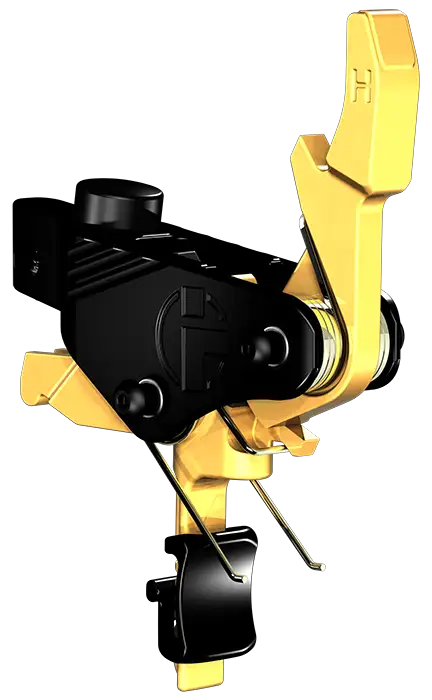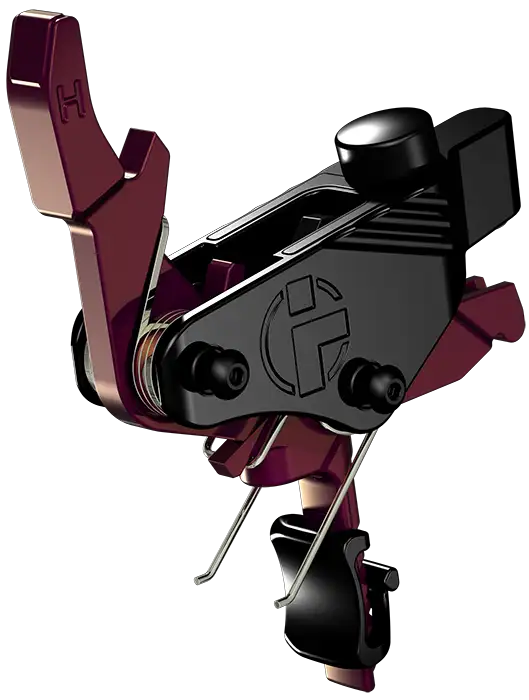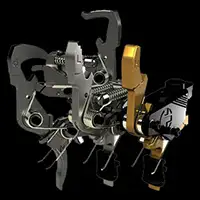An answer to a 24 FAQ describes the 24’s total creep as about 1/16 of an inch, the same as the stock trigger. That’s not very much at all. The dimension given is measured by an instrument. Users of the trigger report however that the creep is very small if not zero, so even mentioning the “creep” word can be misleading to some, given the bias many shooters may have. The best way to form an opinion on the trigger is to try it.
Back to the 24, the creep feels smooth and long by comparison to the the stock case, which feels gritty and short. That’s because shooters who are unused to the light single stage pull of the 24 can very easily over estimate the amount of creep. Again, the creep term has taken on a negative connotation with AR15 triggers due to the stock design’s grittiness and high weight. When we use it, creep describes firearm sear engagement and sliding from the starting point of trigger movement through to hammer release. So, in the 24 family’s case, it’s a positive not a negative. What other single stage trigger feels as smooth, light, and controllable as the 24? Describing it is one thing. Experiencing how HIPERTOUCH® trigger “creep” feels is another matter. But we’ll try.
Yes, the creep of the 24E is measurable and half of that found in the 24. Why not less creep? Safety is one obvious answer. Any firearm trigger should be pulled consciously and deliberately. Beyond that, we thought it important that if the shooter wanted to take advantage of the light stroke, he could draw it back more slowly and still be surprised at break to remedy flinching, or draw it back more quickly for speed without undue stress or frustration developing in the mind or the shooting hand. From that standpoint, it all comes down to controlling the stroke. Every shooter should be able to successfully develop his own technical approach without the bad characteristics of an inferior trigger getting in the way. Having said that the creep IS one half that of the 24 when measured by an instrument, the shooter’s perception will be that the creep is very much shorter, if it has any creep at all. The reason for that is built into the sear design’s subtleties and is very difficult to describe in words alone, so we’ll pass.
Pulling the 24E trigger is therefore more like pulling a two stage trigger without a long first stage take up, where that very short second-only stage can be set to three different low weights. As different as the 24 trigger stroke is to any other AR trigger system out there, so is the 24E.
After the trigger is pulled to take up all of the over-travel (stopping it against the safety-selector), the shooter can now slowly let off the trigger to reset the hammer. The reset is both tangible and audible, even through ear protection. If the shooter stops let off at the point of hammer reset, from there the creep is now less than half of the 24’s initial creep. This is possible because the trigger “creep” of the primary sear and that of the semi-auto disconnector sear during let off is smooth and the weight light, that is, in both trigger directions. A little practise will suggest how to best employ these attributes for accuracy under diverse conditions for those who shoot competitively or operationally.
Now, the 24E creep characteristics are more like the 24C’s than the 24. Visit the 24C FAQ tab for more information on how the 24C’s creep is subetly different and designed for maximum effect for a very specific shooter type and scenario.















